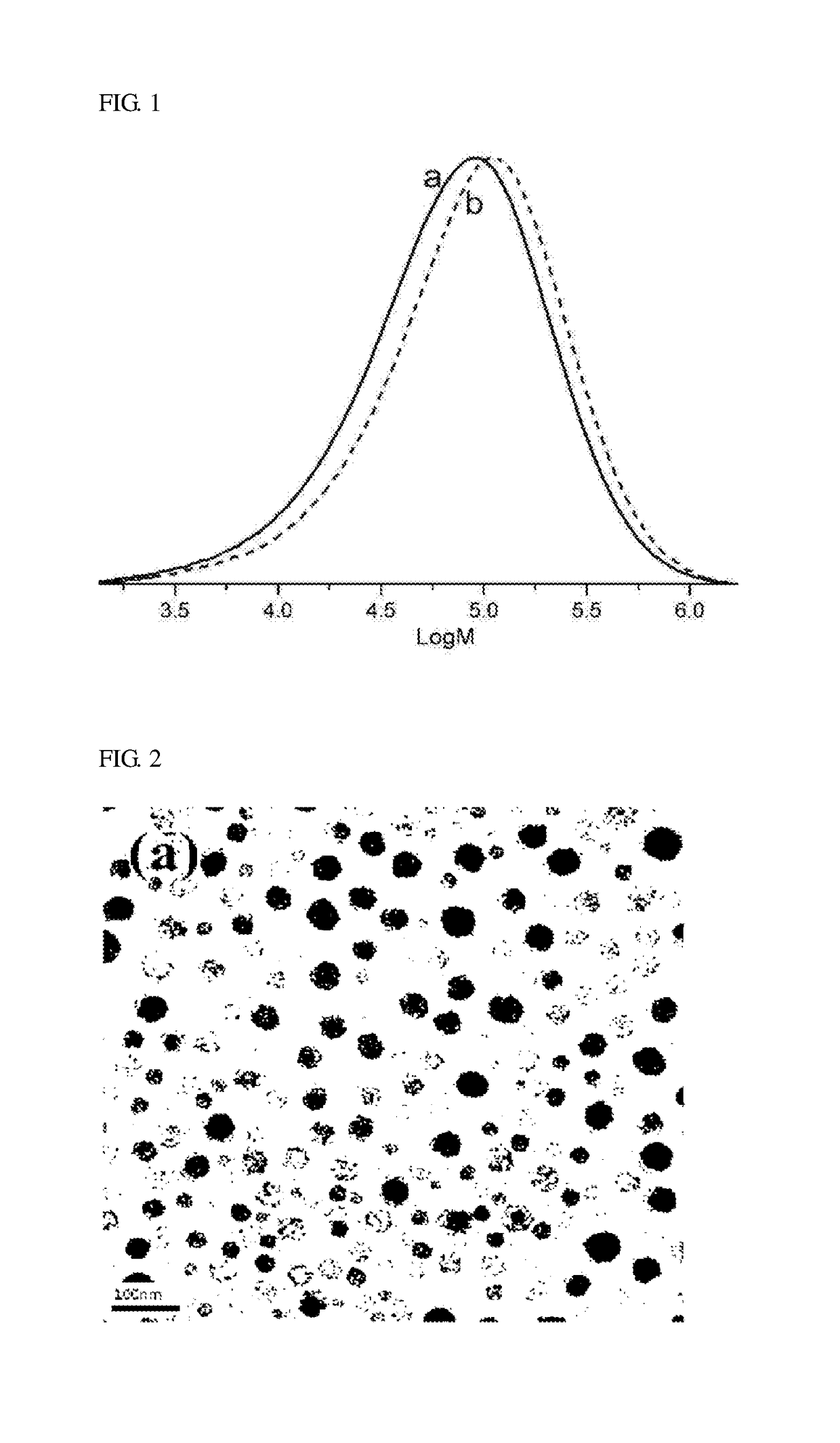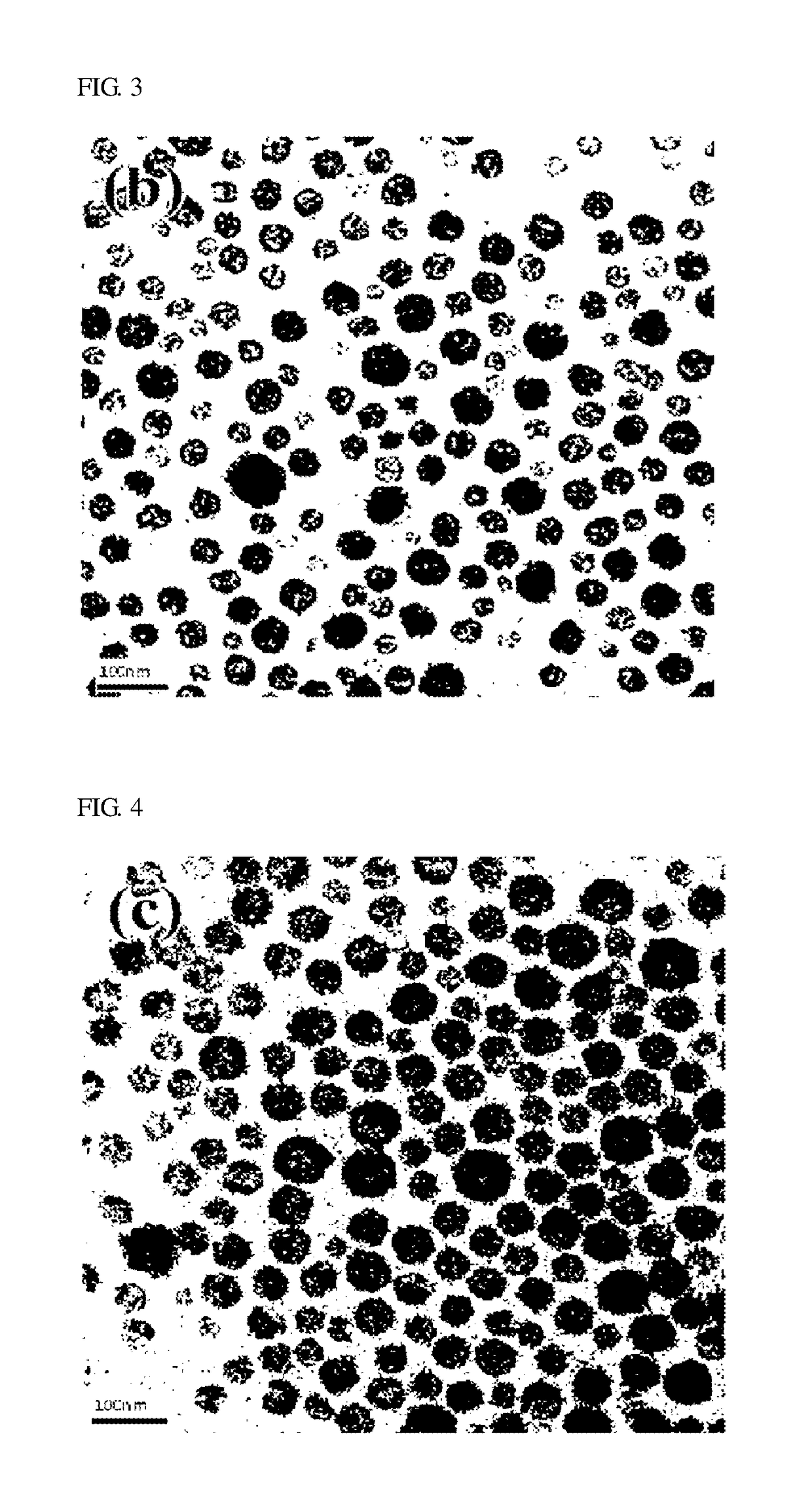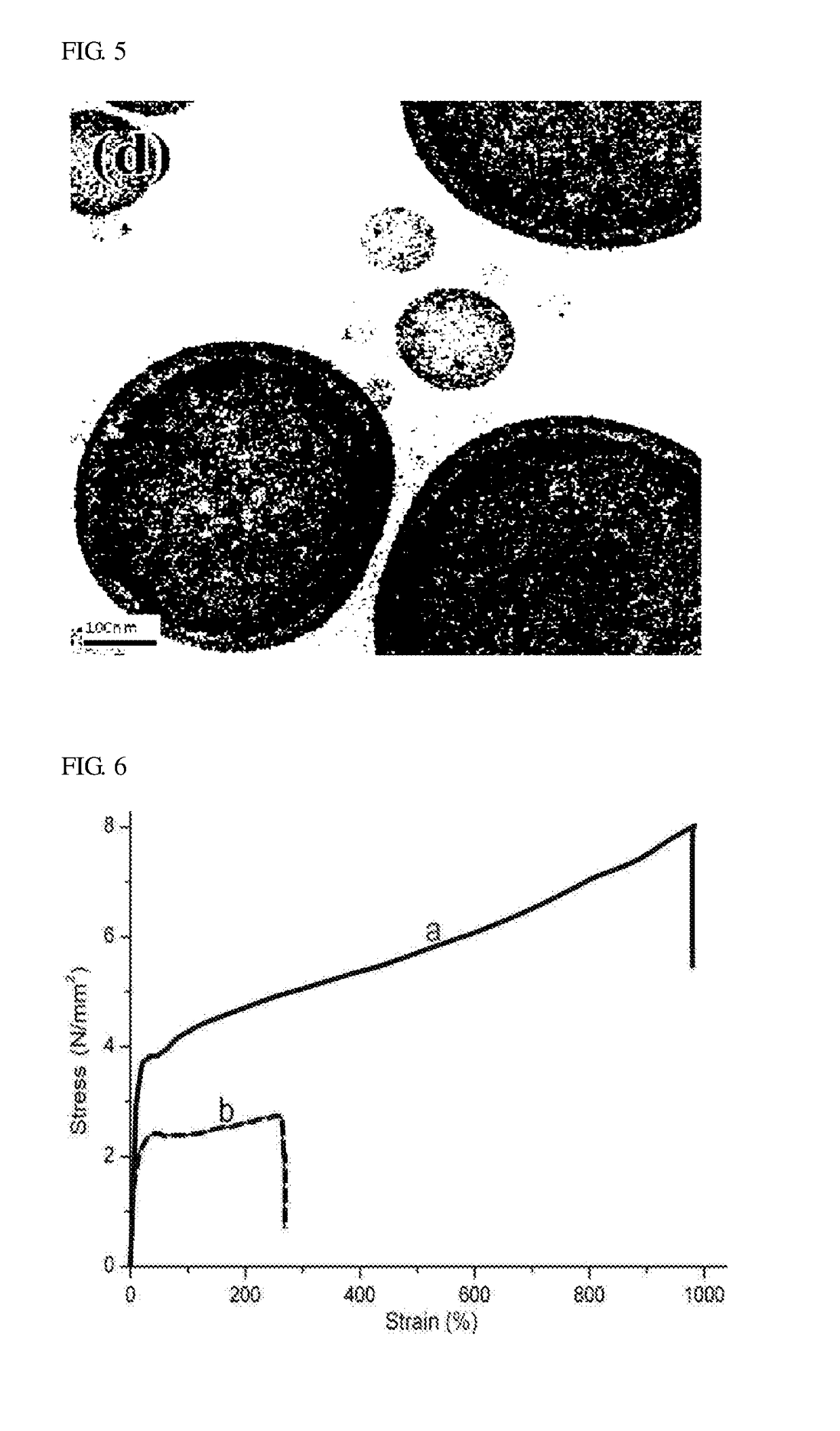Organic zinc compound comprising polyolefin-polystyrene block copolymer, and method for preparing the same
a polyolefin-polystyrene block and polyolefin-polystyrene technology, which is applied in the direction of zinc organic compounds, metallocenes, organic compounds, etc., can solve the problems of limiting market expansion, double bonding often becomes a problem, and the unit cost of sebs and seps is considerably higher than that of sbs and sis before hydrogenation
- Summary
- Abstract
- Description
- Claims
- Application Information
AI Technical Summary
Benefits of technology
Problems solved by technology
Method used
Image
Examples
example 1
on of Organic Zinc Compound [Formula 1 (a=0, A=Hexyl, Ar=pH)] Containing Polystyrene Group
[0106]After a dihexyl zinc compound (11.3 mg, 0.048 mmol) was dissolved in methylcyclohexane (2.5 g) in a one-neck flask, a solution prepared by dissolving n-BuLi (6.2 mg, 0.096 mmol, =0.20) and a compound of Formula 5, TMEDA (11.2 mg, 0.096 mmol) in methylcyclohexane (2.5 g) at a molar ratio of 1:1 was added thereto. After stirring for 10 minutes, a styrene monomer (2.5 g, 24 mmol, [Styrene] / [Zn]=500) was dissolved in methylcyclohexane (2.5 g) and then added, followed by anionic polymerization for 2 hours at 90° C. Conversion of all of the styrene into polystyrene was identified by an NMR spectrum.
[0107]An organic zinc compound comprising polystyrene and an organic lithium compound prepared thereby were decomposed by adding ethanol (1 mL), and dissolved in methylcyclohexane, then passed through a silica gel pad to obtain pure polystyrene. The obtained pure polystyrene has a mass corresponding ...
example 2
[0111]An experiment was performed by the same method as described in Example 1, except that an amount of n-BuLi.(TMEDA) was increased 5 times (i.e., [Li] / [Zn]=1.0). The number of polystyrene polymer chains (i.e., {[PS-chains]-[Li]} / [Zn]) produced from an organic zinc compound was 1.97, confirming that the polymer chains were effectively grown in two directions from the zinc compound.
example 3
[0112]An experiment was performed by the same method as described in Example 1, except that an amount of n-BuLi.(TMEDA) was decreased by ½ (i.e., [Li] / [Zn]=0.10).
[0113]While a reaction time required for converting all of the styrene monomer was 8 hours, the number of polystyrene polymer chains (i.e., {[PS-chains]-[Li]} / [Zn]) produced from the organic zinc compound was 1.89, confirming that polymer chains were effectively grown in two directions from the zinc compound.
PUM
| Property | Measurement | Unit |
|---|---|---|
| Current | aaaaa | aaaaa |
| Current | aaaaa | aaaaa |
| Digital information | aaaaa | aaaaa |
Abstract
Description
Claims
Application Information
 Login to view more
Login to view more - R&D Engineer
- R&D Manager
- IP Professional
- Industry Leading Data Capabilities
- Powerful AI technology
- Patent DNA Extraction
Browse by: Latest US Patents, China's latest patents, Technical Efficacy Thesaurus, Application Domain, Technology Topic.
© 2024 PatSnap. All rights reserved.Legal|Privacy policy|Modern Slavery Act Transparency Statement|Sitemap



